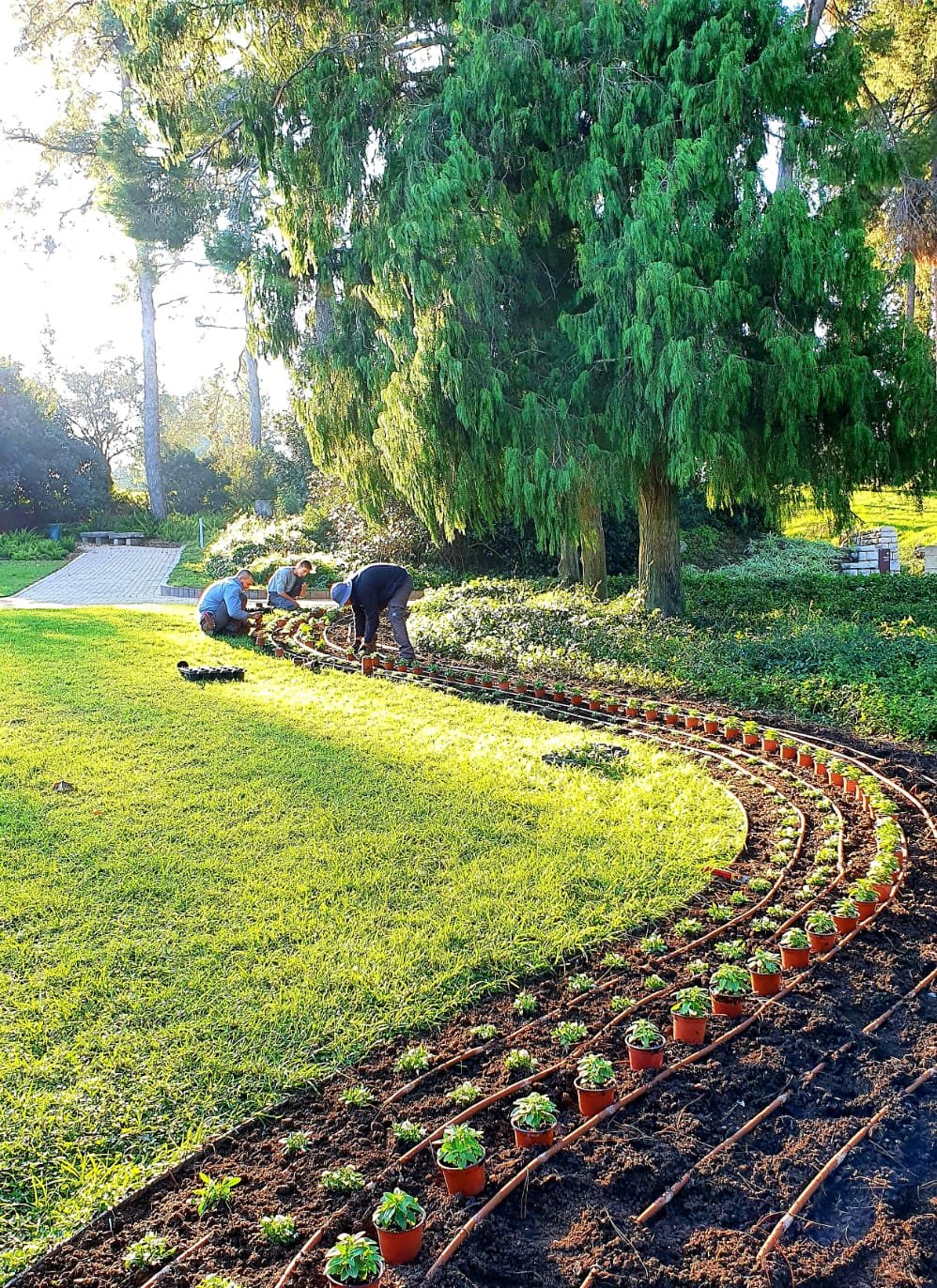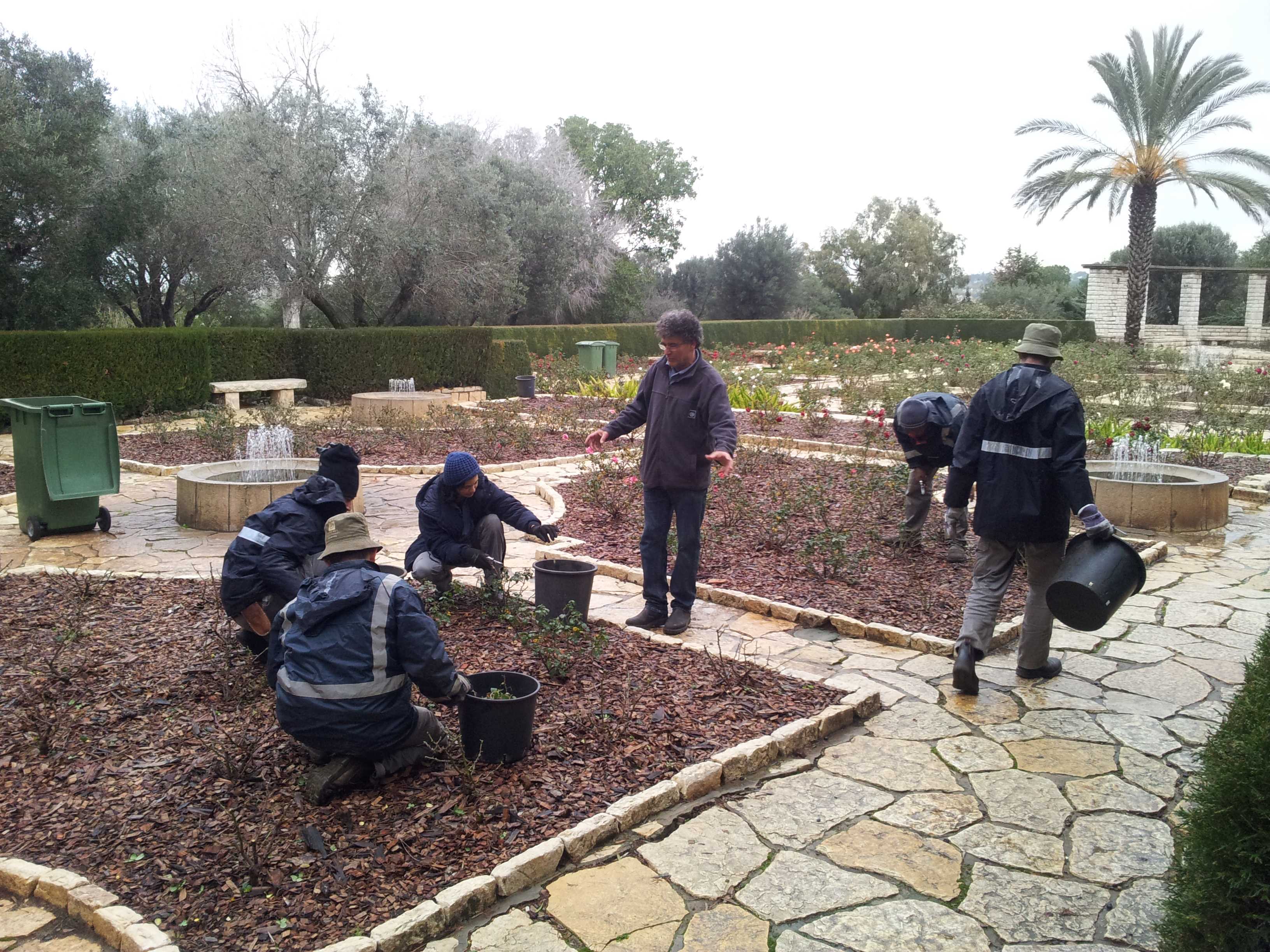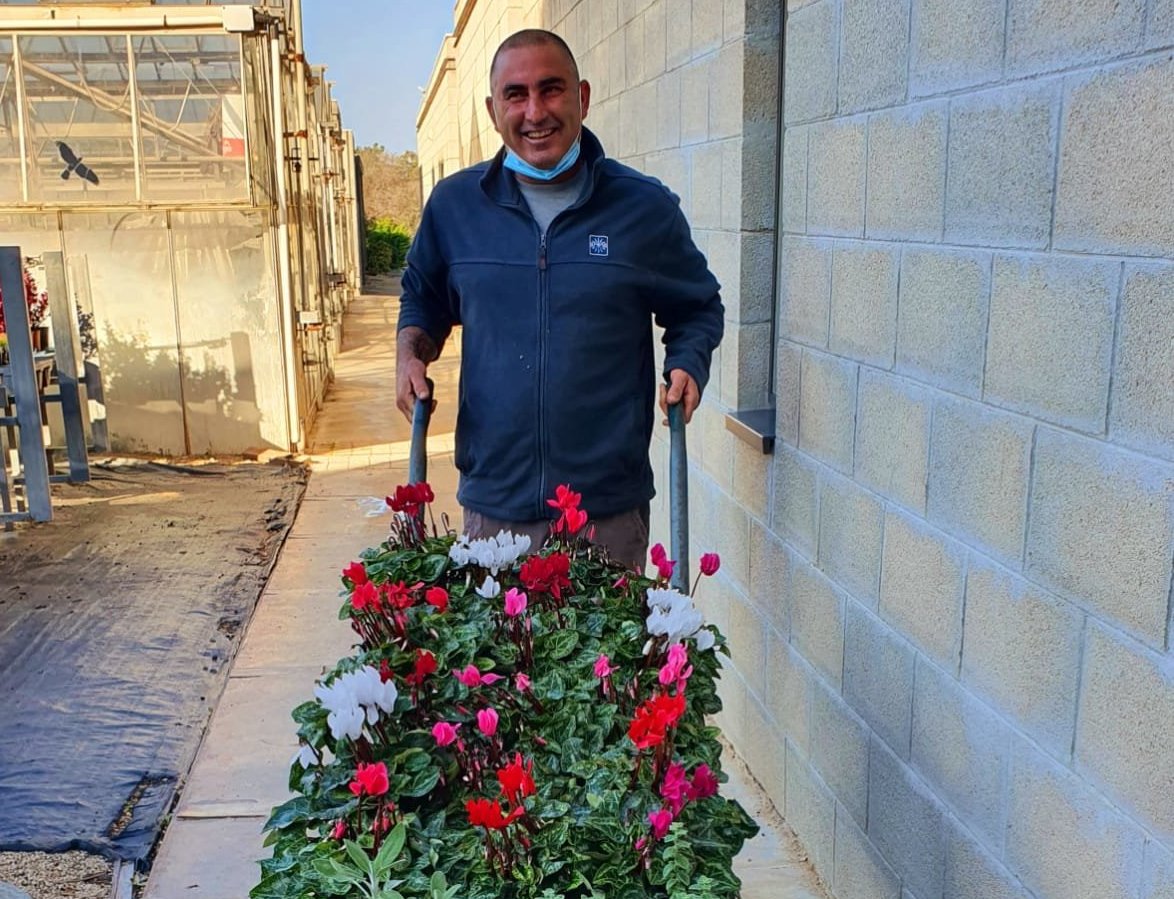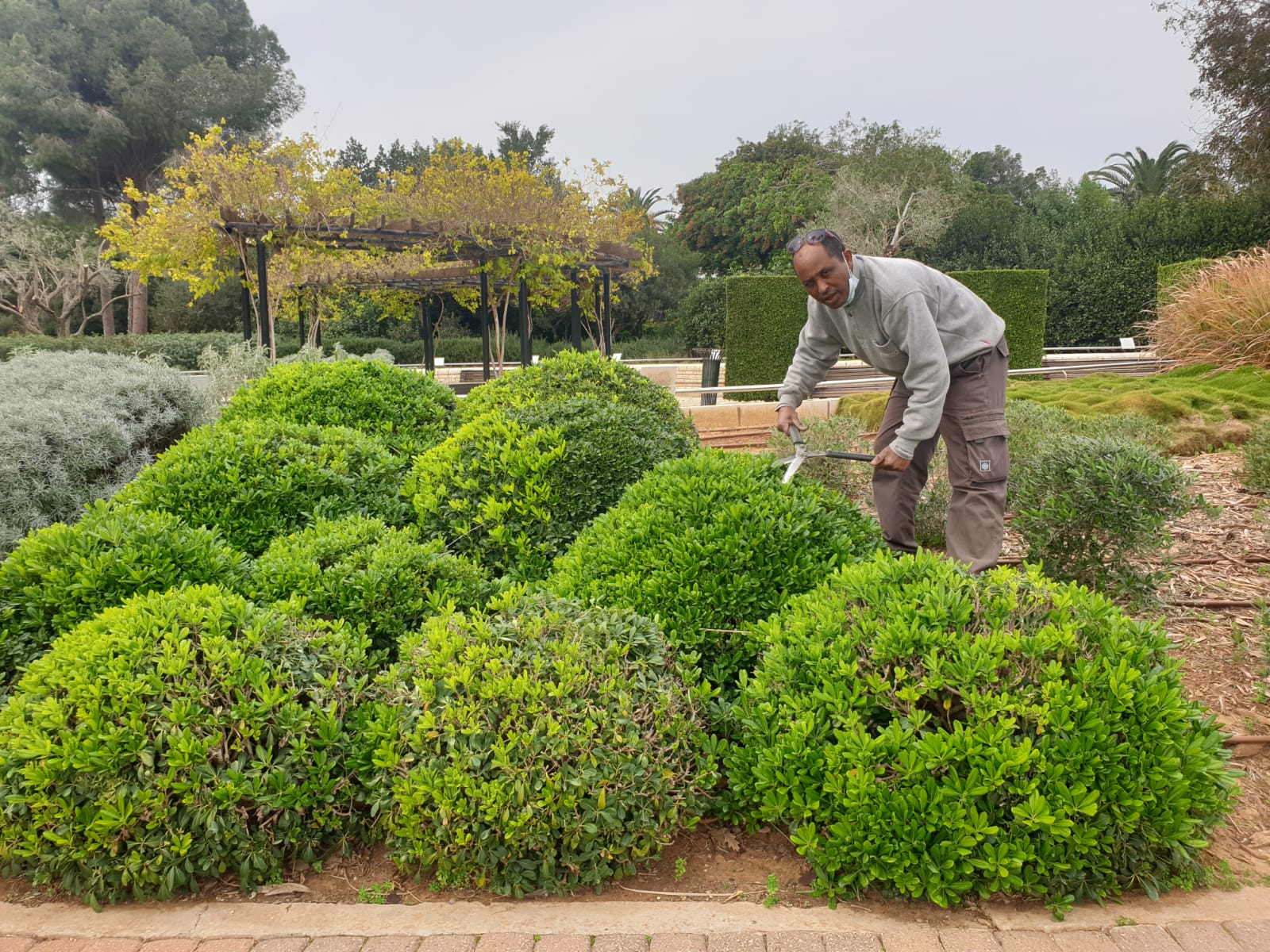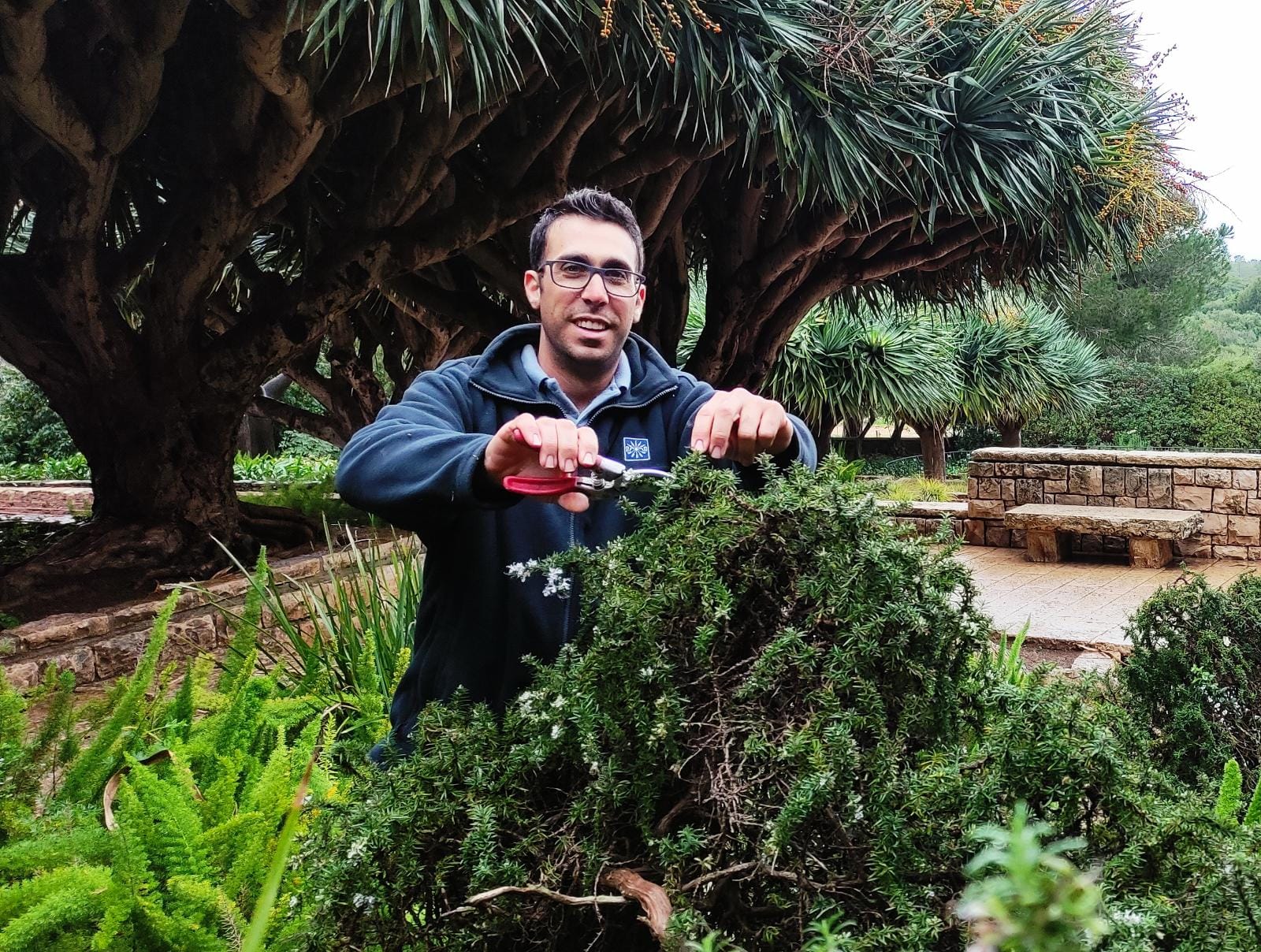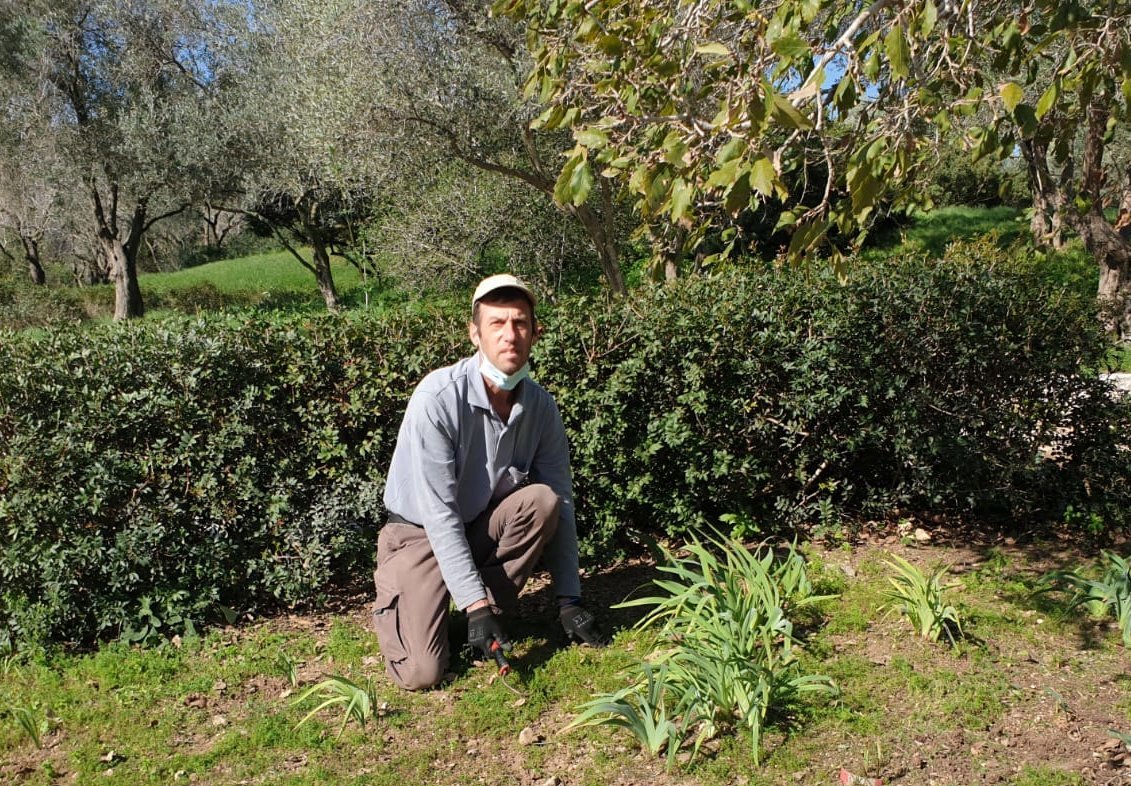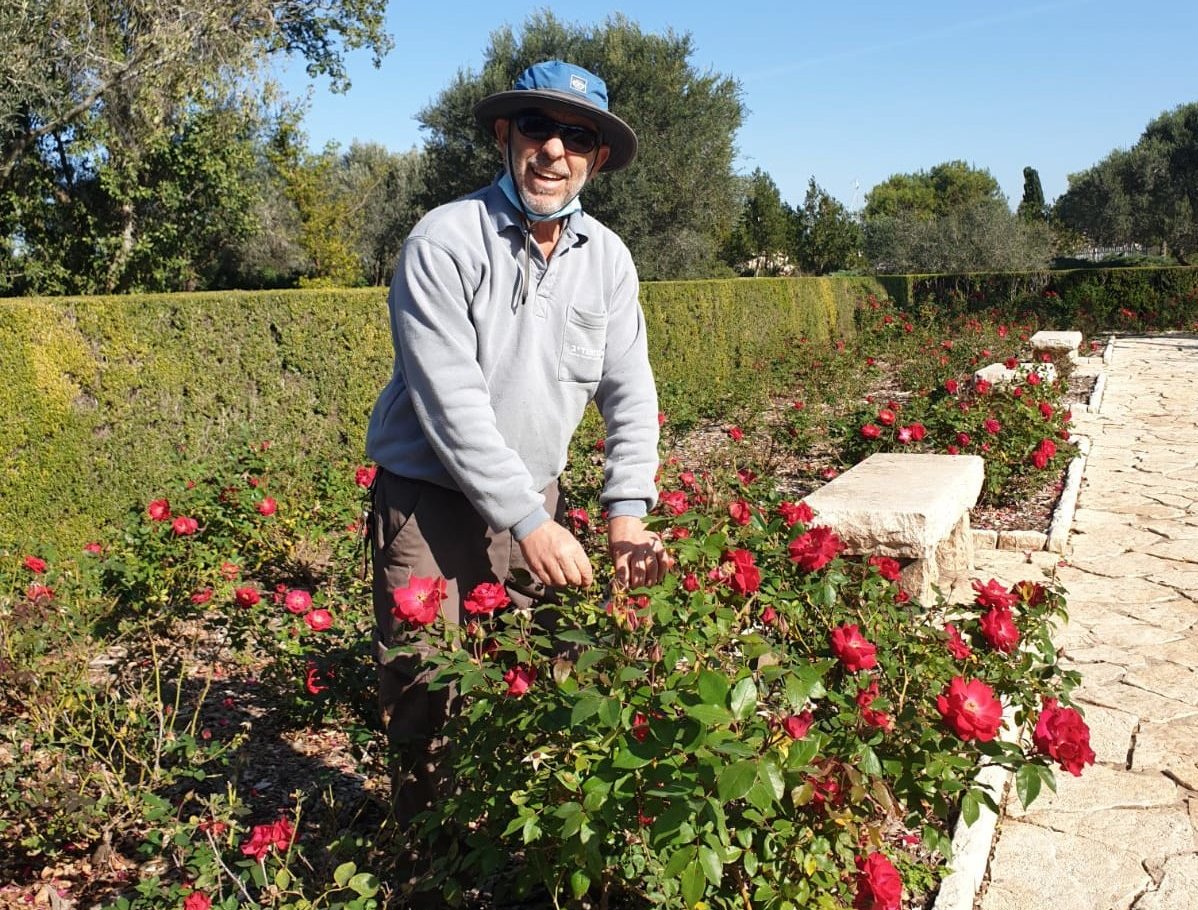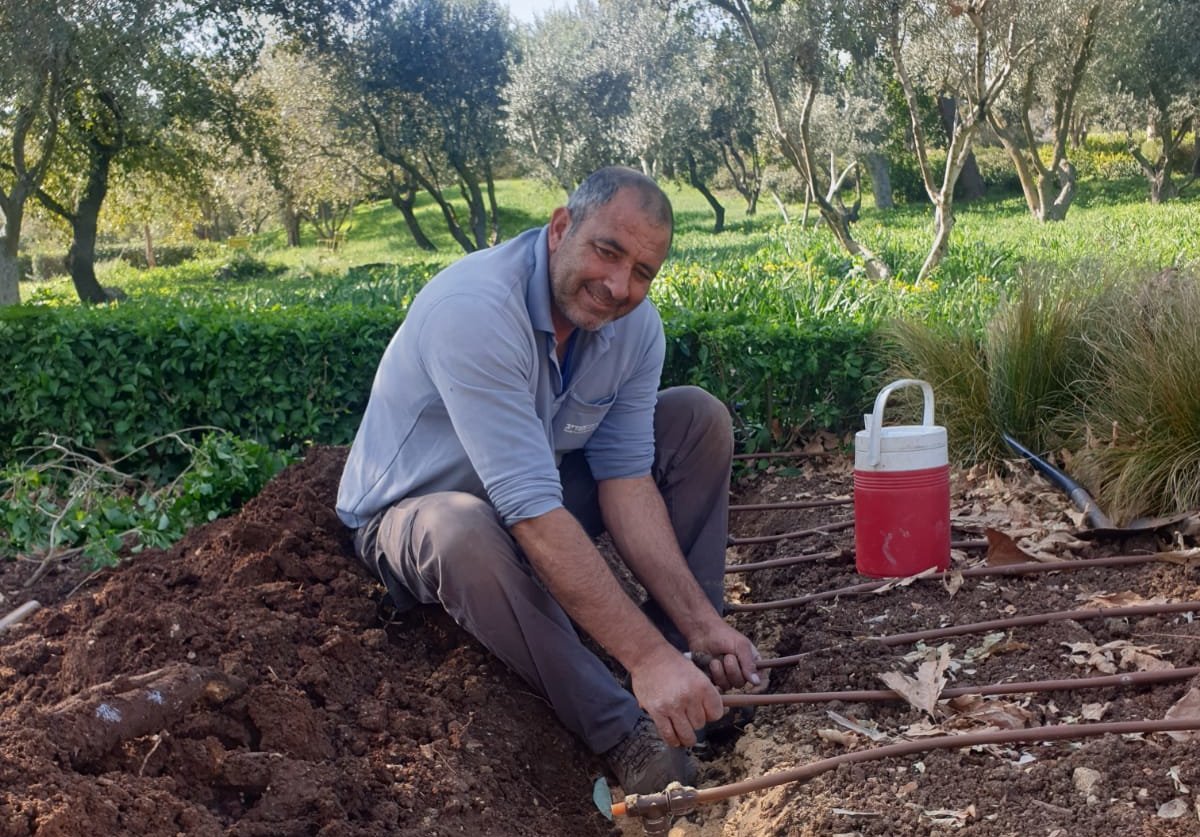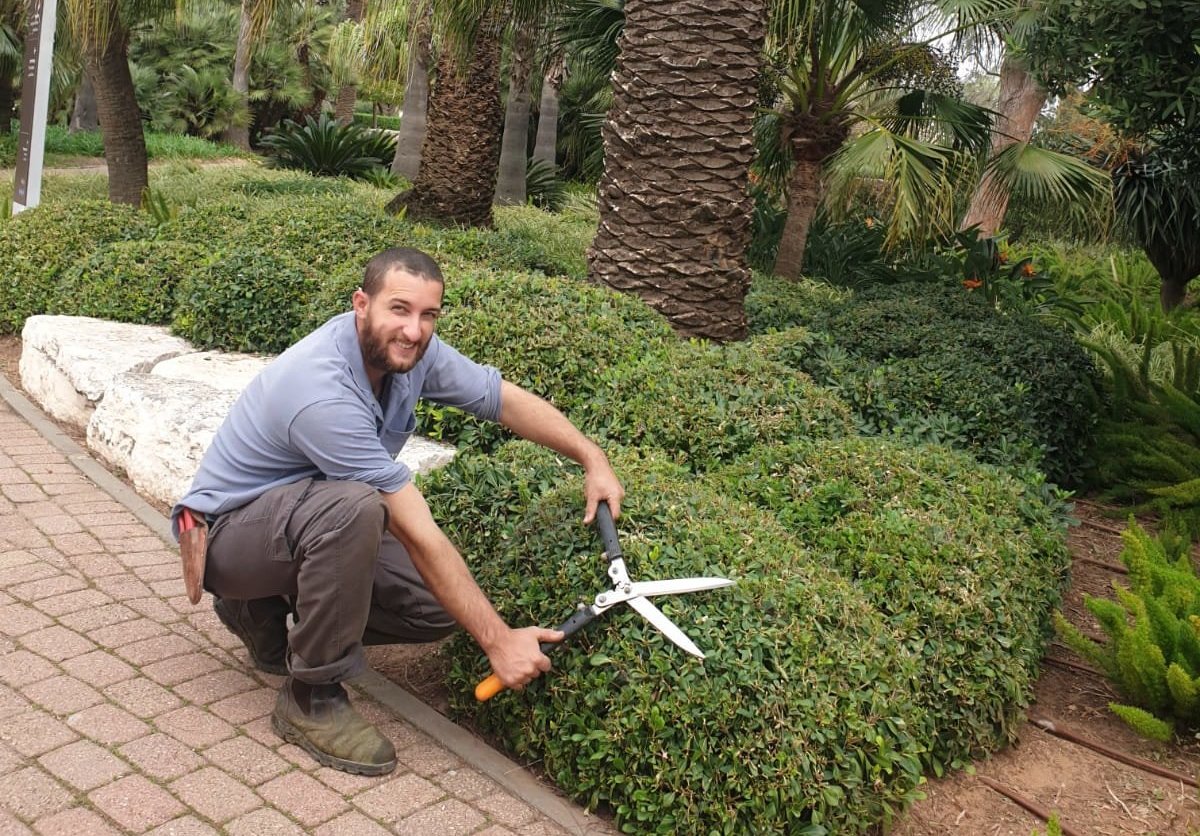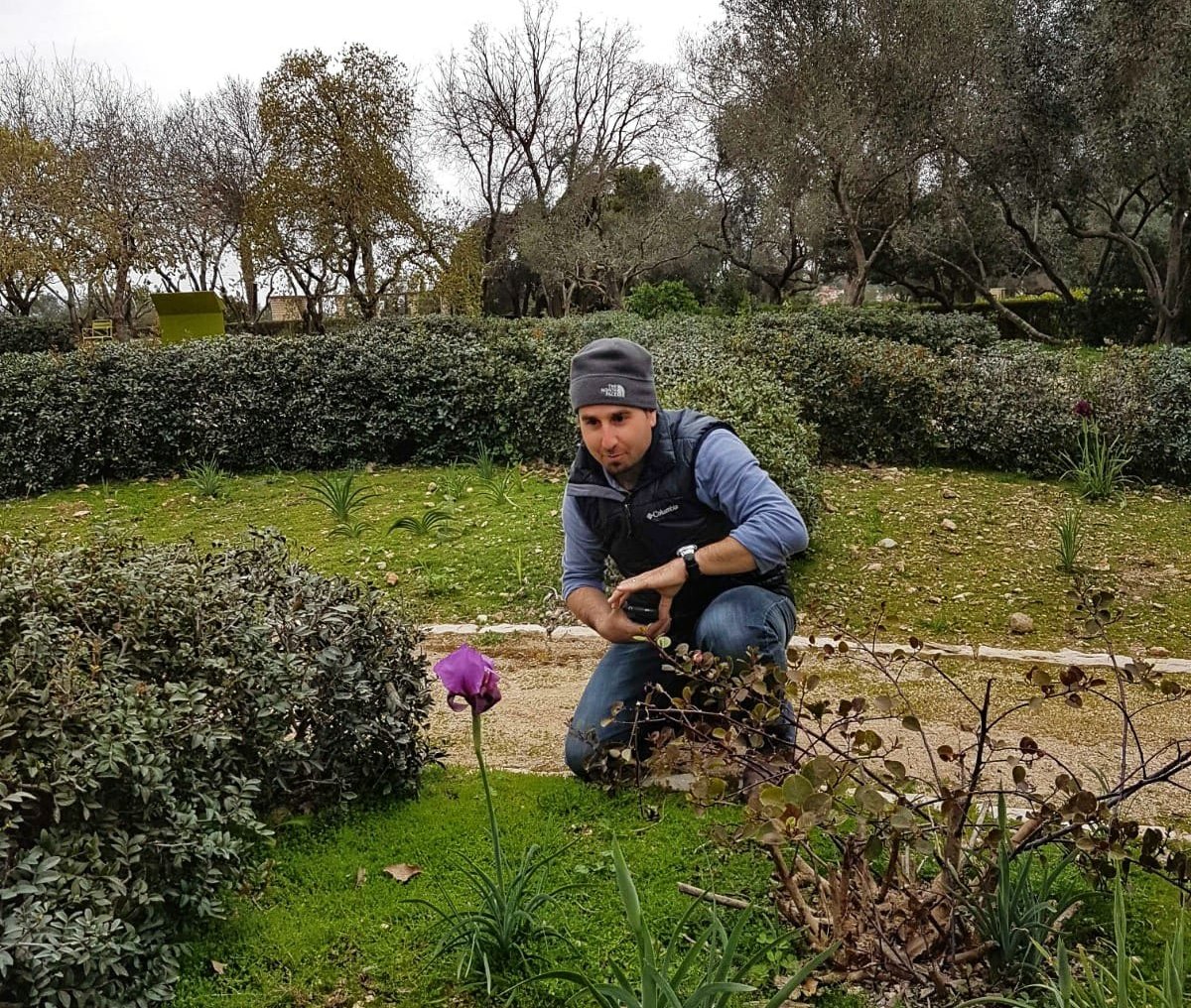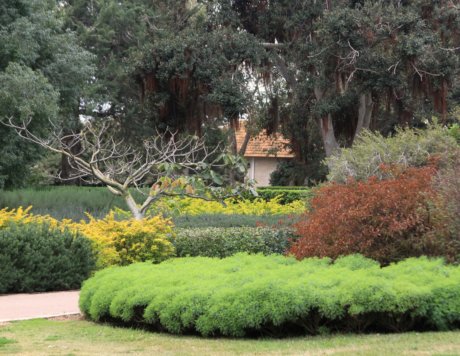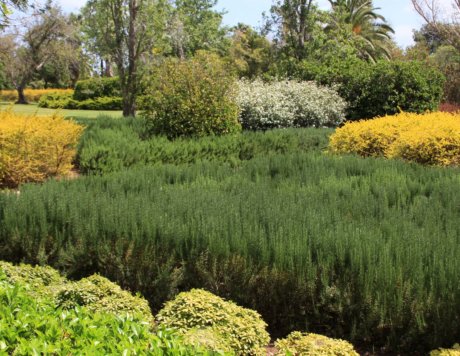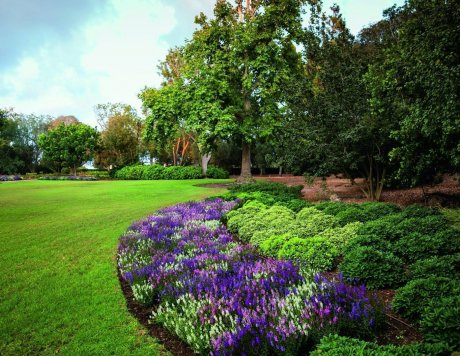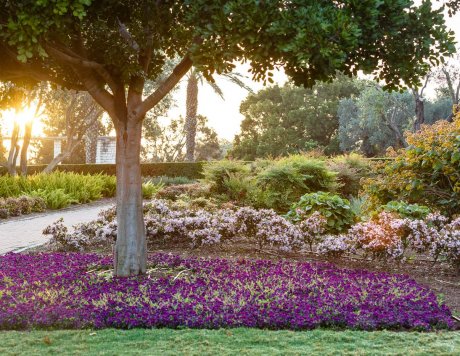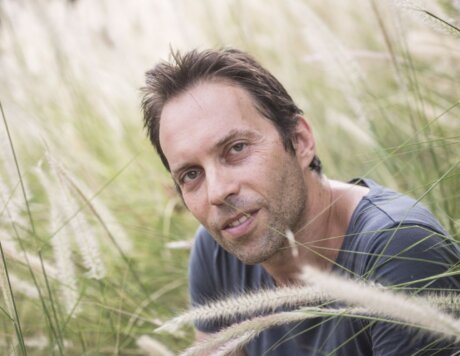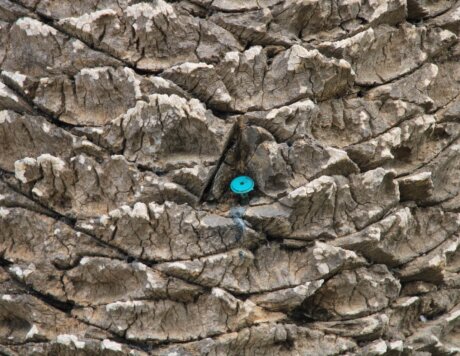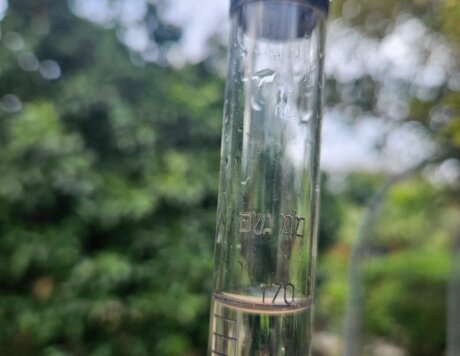Ramat Hanadiv’s vision is led by the one and only Hugo Jan Trago, the CEO of Ramat Hanadiv.. Hugo, a man of nature, reached Israel in 1984 as a horticultural student from the Netherlands, fell in love with Ramat Hanadiv, and began working here as a gardener. In 1991 he was appointed director of the gardens, and subsequently became CEO of Ramat Hanadiv. Even today, as part of his role as CEO, the gardens are his “baby”. But the daily maintenance of the gardens is trusted to our professional, skilled gardening staff, comprising nine people: Shmulik – head gardener, Rafi – nursery manager, Lior – garden curator, and the gardeners, David, Chaim, Sameh, Eliyahu, Ofer and Stav.
Shmulik oversees the work
Shmulik Cohen began here as a gardener 31 years ago, “when you could have a barbecue on the grass”; it’s clear that since then much water has flown through the irrigation pipes. The gardens have developed and become a source of pride for their beauty, a flowering oasis throughout the year that delights the visitors who stroll along its paths.
Shmulik, with his suntanned skin, constantly on the move, is a turbo engine and extremely fit, and it’s no wonder: he traverses the gardens time after time, passing by the gardening staff, to check, counsel, and guide, give a compliment here and there, and maintain quality. He knows every shrub and plant in the gardens, knows the correct form and height for each of them – what should be round, what should be straight, what should be in the flowing English style, and what should be in the formal French style. He points to the funnel shape created by the shrubs so as not to hide the sea, and in years when it’s possible, he participates in continuing education programmes in gardens around the world, in order to become familiar with them, learn, and be inspired by other gardens and new gardening methods.


